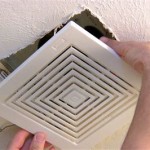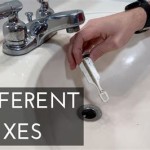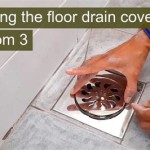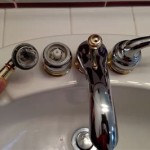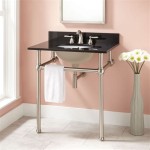Bathroom Sink Waste Pipe Connection: Essential Aspects
The bathroom sink waste pipe is a crucial component in draining wastewater from the sink. Ensuring a proper connection is essential to maintain a functional and leak-free drainage system. This article will delve into the essential aspects of bathroom sink waste pipe connection, highlighting key factors and best practices.
### Materials and ToolsThe first step involves selecting appropriate materials and tools. PVC pipes are commonly used for bathroom sink drainpipes, along with fittings such as couplings, elbows, and reducers. A hacksaw or pipe cutter is required for cutting the pipes to the desired lengths. Additionally, plumber's putty or Teflon tape is necessary for sealing connections.
### Measuring and CuttingNext, accurately measure and cut the drainpipe. Measure the distance from the sink drain to the drainpipe outlet and add a few inches for slack. Mark the pipe accordingly and cut it using the hacksaw or pipe cutter. Ensure a clean, square cut to facilitate a tight fit.
### Connecting the Waste PipeApply a bead of plumber's putty or wrap Teflon tape around the male threaded end of the waste pipe. Align the waste pipe with the drainpipe outlet and tighten it by hand. Ensure a snug fit but avoid overtightening. Connect any additional pipes or fittings using couplings or elbows.
### Sealing the JointsTo prevent leaks, seal all joints thoroughly. Apply plumber's putty around the base of the waste pipe where it meets the sink drain. Use a finger or a putty knife to spread it evenly and form a watertight seal. Tighten the slip nut on the waste pipe to compress the putty and ensure a secure connection.
### Attaching to Drainpipe OutletConnect the waste pipe to the drainpipe outlet located underneath the sink. This may require using a reducing coupling to adapt the waste pipe diameter to the drainpipe outlet. Secure the connection using a coupling or elbow, tightening it securely.
### Testing and TroubleshootingOnce the waste pipe is fully connected, test the system by running water through the sink. Check for any leaks at the joints or connections. If leaks occur, tighten the connections or reapply plumber's putty or Teflon tape as necessary. Ensure that the water drains smoothly and efficiently.
### ConclusionA properly connected bathroom sink waste pipe ensures optimal drainage and prevents leaks and damage. By following these essential steps and best practices, you can ensure a functional and trouble-free bathroom drainage system.
How To Install Bathroom Sink Drain Queen Bee Of Honey Dos

How To Install A Flexible Waste Pipe When The Drain Doesn T Line Up Handyman S Daughter

Plastic Waste Pipe For Bathroom Kitchen Sink Wash Basin Drain Water Ou Zap Bath Fittings

Simple Ways To Fit A Sink Waste Pipe With Pictures Wikihow

Bathroom Kitchen Flexible Basin Sink Trap Waste Pipe Hose Plumbing Connector To

Connecting Soil And Waste Pipes To Below Ground Drainage

How To Install A Flexible Waste Pipe When The Drain Doesn T Line Up Handyman S Daughter

Flexible Waste Trap Plastic Pipe Connector For Basin Bath Or Kitchen Sink

Buy Curovit Pvc Flexible Two In One Double Waste Pipe 1 4 For Kitchen Sink Heavy Duty Water Drain Hose Tube Connector At Best S Jiomart

Universal Bathroom Basin Shower Kitchen Sink Flexible Waste Pipe Trap Connector Com

